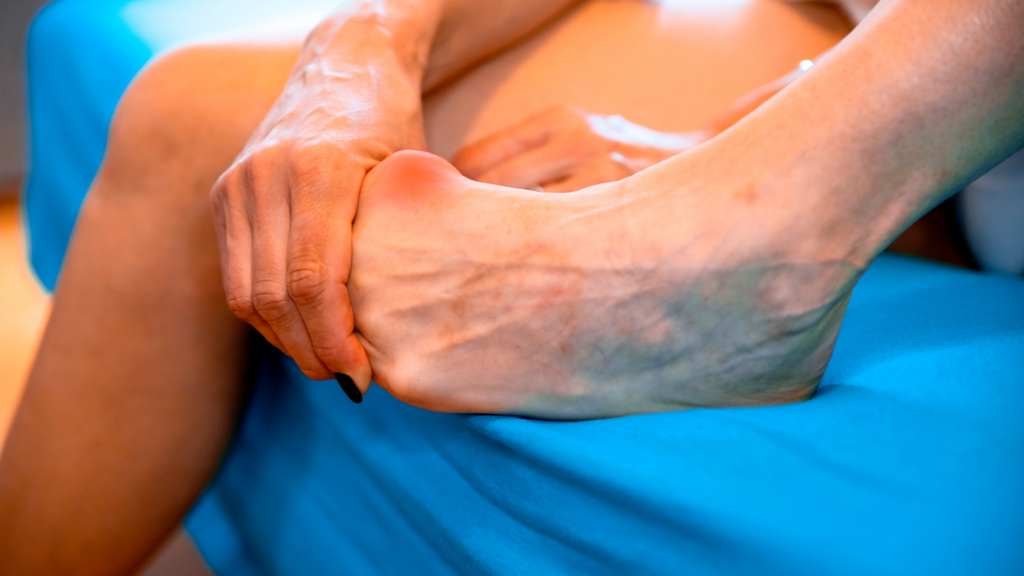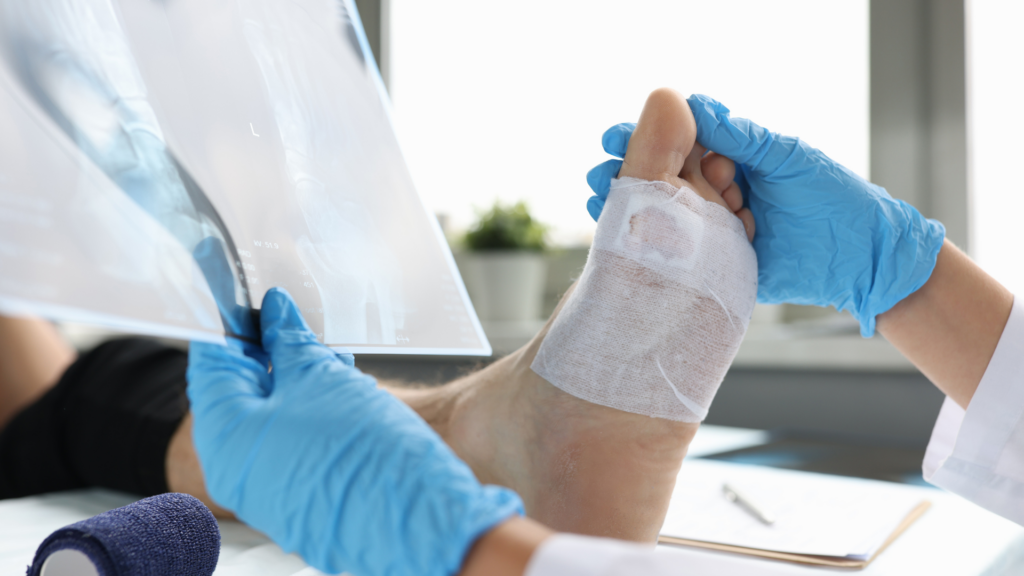Bunions, or hallux valgus, are bony protrusions that form at the base of the big toe, causing pain, swelling, and difficulty walking. While some people experience mild discomfort, others may require medical intervention to correct the deformity. Fortunately, various treatment options exist, ranging from non-invasive solutions like bunion correctors and supportive footwear to advanced surgical techniques such as lapiplasty bunion surgery.
In this guide, we will explore the most effective ways to manage, prevent, and treat bunions, helping you make informed decisions about your foot health and mobility.
What Is a Bunion?
According to APMA, a bunion occurs when the big toe gradually shifts toward the second toe, causing the joint at the base to protrude outward. This misalignment can result from genetics, improper footwear, arthritis, or biomechanical imbalances. Bunions are progressive, meaning they worsen over time if left untreated.
Common symptoms include:
- Redness, swelling, and inflammation around the big toe joint
- Pain or discomfort when walking or wearing tight shoes
- Calluses or corns developing due to friction
- Limited toe mobility and stiffness
Now let’s explore a treatment options, starting with non-surgical approaches that can provide relief and prevent progression.
Bunion Correctors: Do They Really Work?
Bunion correctors are orthopedic devices designed to provide relief by realigning the toe and reducing pressure on the affected joint. While they cannot reverse the bunion, they may help slow its progression and relieve discomfort when used correctly.
Best Bunion Correctors to Try
- NatraCure Gel Big Toe Bunion Guards & Toe Spreaders – Helps reduce friction and realign the big toe
- ZenToes Bunion Corrector and Relief Sleeve – Provides compression for pain relief and swelling reduction
- Dr. Scholl’s Bunion Relief & Toe Corrector – Ideal for nighttime correction and gentle alignment
These products have been highly rated for providing relief and preventing further misalignment. However, they work best when combined with proper footwear and stretching exercises for maximum effectiveness. According to podiatrists, while bunion correctors may offer short-term relief, they are not a substitute for medical treatment if the bunion is severe or continues to worsen.
Choosing the Best Shoes for Bunions
Wearing ill-fitting shoes is one of the leading causes of bunions. High heels and narrow-toe boxes can worsen the condition, making supportive footwear essential for long-term foot health.
Key Features of the Best Shoes for Bunions
- Wide Toe Box – Prevents excessive pressure on the bunion, allowing natural toe movement
- Arch Support – Reduces strain on the foot and promotes better alignment
- Flexible Materials – Ensures comfort and minimizes friction against the bunion
- Shock Absorption – Helps cushion each step and reduce impact on the foot joints.
Recommended Shoes for Bunions
- Altra FWD Experience – Designed with a wide toe box and cushioned support for all-day wear
- Brooks Ghost 16 – Excellent for runners with bunions, offering stability and soft cushioning
- Hoka Gaviota 5 – Provides great arch support for individuals with severe foot misalignment
These shoes for bunions have been highly recommended by podiatrists and people managing bunion pain, making them a great investment for foot health. Choosing the right footwear can help prevent further progression and alleviate daily discomfort.
Lapiplasty Bunion Surgery: The Permanent Solution
For severe bunions that do not respond to conservative treatment, lapiplasty bunion surgery is a cutting-edge procedure that offers a long-term correction by addressing the root cause of the deformity. Unlike traditional bunionectomy, which simply shaves off the bony bump, lapiplasty realigns the metatarsal bone, securing it with titanium plates to prevent recurrence.
Benefits of Lapiplasty Surgery
- Corrects the bunion in three dimensions, preventing future misalignment
- Faster recovery, with many patients able to bear weight within days instead of months
- Stronger and more stable correction, reducing the risk of bunion recurrence
- Minimally invasive approach, leading to less post-surgical pain and scarring compared to traditional bunion surgery
Preventing Bunions from Getting Worse
Even if you’re not ready for surgery, you can take proactive steps to manage your bunion and prevent further progression.
Tips for Bunion Management
- Wear properly fitted shoes – Avoid narrow-toe boxes and high heels
- Use bunion correctors at night – Helps slow the worsening of misalignment
- Stretch and strengthen your feet – Toe exercises and stretches can relieve pain
- Apply ice for swelling – Reduces inflammation after long periods of walking
- Consult a podiatrist for early intervention – They can assess your condition and recommend the best treatment options
By dopting these habits, you can minimize discomfort and maintain foot health without needing immediate surgical intervention.
Final Thoughts: Which Bunion Treatment Is Right for You?
Bunions can significantly impact mobility, comfort, and quality of life, but various treatment options exist to alleviate pain and improve function. Whether you choose a bunion corrector, supportive shoes, or lapiplasty bunion surgery, the key is to act early and seek professional advice before the condition worsens.
If you’re experiencing bunion pain and need expert guidance, Fall Creek Foot & Ankle can help provide personalized treatment solutions.


